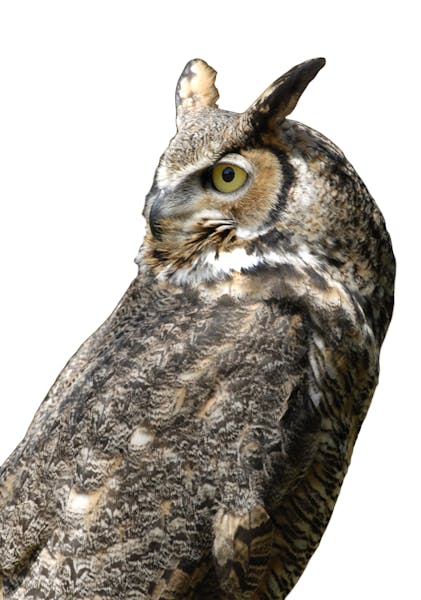What is it about owls that so attracts us? Their large, piercing yet nonthreatening eyes? Or is it their calm demeanor?
Minnesota birders will always remember the historic owl invasion that occurred during the winter of 2005. There were thousands of great gray owls in the state, as well as hundreds of northern hawk owls. Also present that winter in unusually high numbers were boreal owls, but these small and secretive raptors are much less obvious and rarely seen.
The southward movement of owls is called an "irruption" by biologists. Bird experts theorize that the owls traveled into Minnesota that year, departing from their typical ranges in central and northern Canada, because of an apparent shortage of prey, particularly voles, which are small mouse-like rodents. More recent studies suggest perhaps the opposite is true: Irruptions are caused by an excess of prey, pushing large broods of young owls farther south.
To witness this spectacular owl onslaught in 2005 birders from all over the United States and the world came to Minnesota.
By late February 2005, the Minnesota Ornithologists' Union (MOU) had tallied nearly 2,500 great gray owls and roughly 300 northern hawk owls. The significance of those numbers can be realized when compared with the averages: Only 35 great gray owls and six northern hawk owls are seen in Minnesota during a typical winter.
This winter, owl sightings are more representative of a normal winter.
Just a handful of great gray owls have been spotted, and some of those are likely full-time residents of Minnesota. Northern hawk owls have also been seen in parts of Minnesota but nowhere near the numbers of 2005. Most of the hawk owls and great gray owls were glimpsed northwest of Duluth in a birding hot spot called the Sax-Zim Bog. A scattering of hawk owls and great gray owls has showed up in Aitkin County as well.
There has, however, been an irruption of snowy owls into Minnesota this winter. More than 200 of the big white owls with piercing yellow eyes have been spotted by birders, especially in open farm country, where they commonly hunt from power poles.
Bill Marchel, an outdoors writer and photographer, lives near Brainerd.
